A Marine engages a target during a range in Kuwait, April 28, 2021.
Providing up-to-date information, news and original content on American Military issues.
Navy Petty Officers 3rd Class Fangfang Wen, left, originally from China, and Chloe Nichole Luz Rodriguez, a native of the Philippines, recite the oath of allegiance to become U.S. citizens during a naturalization ceremony aboard the USS Mustin in Yokosuka, Japan, May 7, 2021.
May 7, 2021
The Department of Defense’s (DOD) Biotech Optimized for Operational Solutions and Tactics (BOOST) Program has awarded $5 million in total to five selected technology development proposals for Fiscal Year 2021 (FY21). The Directorate of Defense Research and Engineering for Research and Technology (DDRE(R&T)) in the Office of the Under Secretary of Defense for Research and Engineering (OUSD(R&E)) oversees the BOOST Program.
“I am pleased that DDRE(R&T) is able to provide guidance and support to advance biotechnology research and technology development across the Department through the BOOST Program,” said Dr. JihFen Lei, Principal Deputy and Acting Director of Defense Research and Engineering for Research and Technology. “In order to maintain our Nation’s technological advantage, it is critical that DOD provides resources to bridge the gap between research and product development to accelerate the Modernization Priorities.”
BOOST aims to connect Military Service and Defense Agency biotechnologists with industry researchers and developers in order to accelerate the fielding of viable biotechnology products for our Warfighters. The review committee, composed of OUSD(R&E) senior leaders, selected the following five proposals as FY21 awardees:
To participate in the selection process, DOD laboratories or agencies submit biotechnology development proposals that meet specific criteria. Proposals must include a demonstration of innovative biotechnology in a military environment and a viable technology transition path that engages relevant stakeholders. The overall aim is to deliver new capabilities in a biotechnology modernization application area.
“Biotechnology will fundamentally change the future battlefield and Warfighter capabilities,” said Dr. Stephanie Rogers, Acting Principal Director for Biotechnology in the Directorate of Defense Research and Engineering for Modernization, OUSD(R&E)). “To realize this potential, we must anticipate and generate significant progress and advancements in biotechnology. The BOOST Program plays an integral part in supporting these advancements.”
The sixth of several emergency COVID-19 relief shipments from the United States arrives in India, May 5, 2021.
May 7, 2021 | BY C. Todd Lopez , DOD News
Cost, performance and delivery drive acquisition across the Defense Department, typically in equal measure. But the Space Development Agency has prioritized delivery above all else in its effort to get satellites into space that will deliver non-line-of-sight targeting to warfighters across the globe.
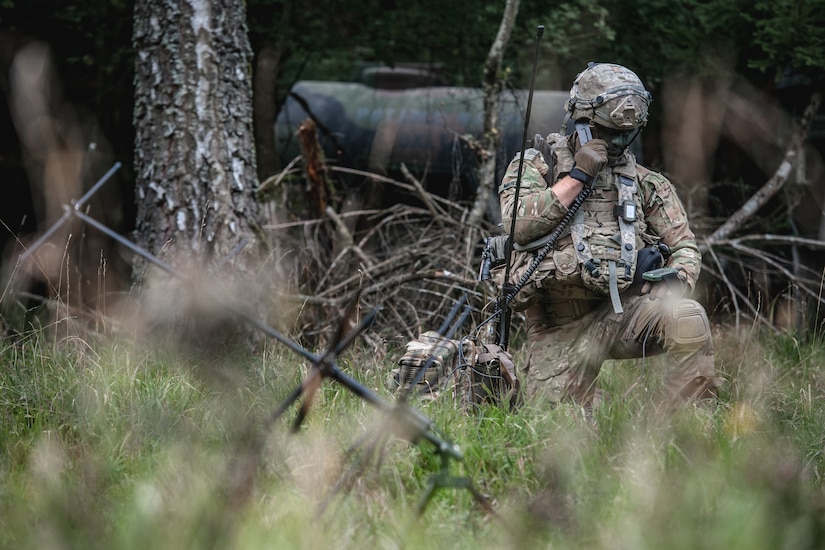
"The key thing is always to focus on getting these capabilities up and operational as rapidly as possible," said Derek M. Tournear, director of the Space Development Agency, during an online discussion today with the Space Force Association. "We will trade performance for schedule to make sure that we can maintain that."
Budget professionals, Tournear said, are concerned about cost. "They want to make sure that the cost is correct and under control."
And program managers are concerned about performance, he said. "They want to make sure that they can hit everything ... they want to get the last ounce of performance out of their program as possible."
But delivery, or schedule, is about getting an acquisition product to the end user on time.

"Who cares about schedule?" he asked. "The warfighter is the one that cares about schedule. No matter how good or how affordable a program or platform is, if it is not there when you need it, it's worthless ... we're always focused on schedule. We're going to get these capabilities up on time."
The Space Development Agency is working now on delivering the National Defense Space Architecture. That system includes hundreds of satellites, delivered in "tranches" every two years, with each tranche providing more capability than the last.
The NDSA's network of hundreds of optically-connected satellites will deliver two primary capabilities to warfighters on the ground, Tournear said.
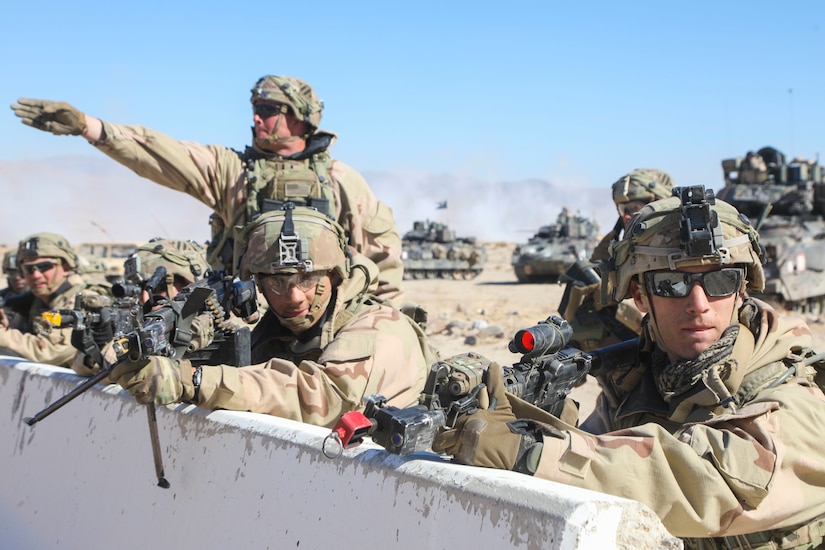
First is beyond line-of-sight targeting for ground and maritime time-sensitive targets, which includes mobile missiles and ships, for instance. The system will provide the ability to detect those targets, track them, calculate a fire control solution and then deliver that solution down to a weapons platform so that the target can be destroyed.
"I want to do all of that in space, and I want to be able to close that chain in single-digit seconds — that's what we're focused on," Tournear said.
The second capability is the same as the first, but for enemy missiles already in flight, he said.
"Everything we do ties back to being able to do these main mission areas," Tournear said.
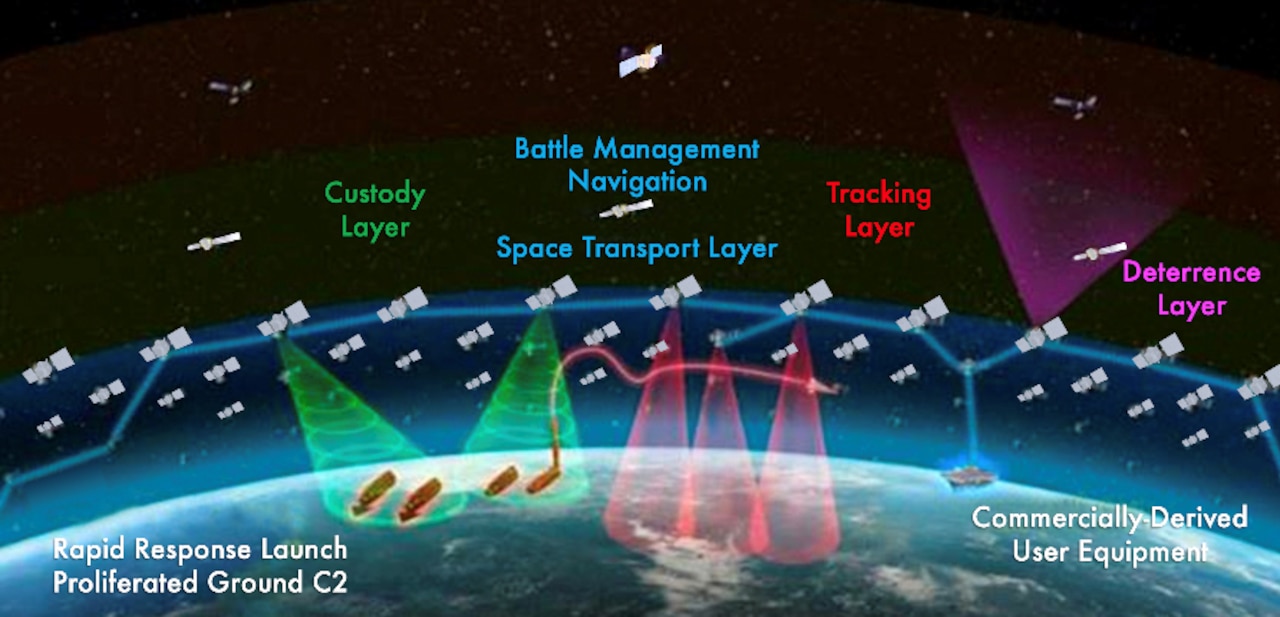
This year, Tournear said, the SDA, in partnership with the Defense Advanced Research Projects Agency, the Air Force Research Laboratory and the Missile Defense Agency, will launch about five satellites in support of the NDSA that will demonstrate the capability of the future system.
The Tranche 0 set of satellites, about 28 in all, will go up in 2022 and 2023 — it'll give warfighters a taste of what's to come, he said.
"The whole point of Tranche 0 is to demonstrate a capability so that the warfighter can start to use that in their tactics, techniques and procedures," he said.
After that, expect to see a lot of launches as part of Tranche 1 — which will put as many as 150 satellites into the sky beginning in September 2024.
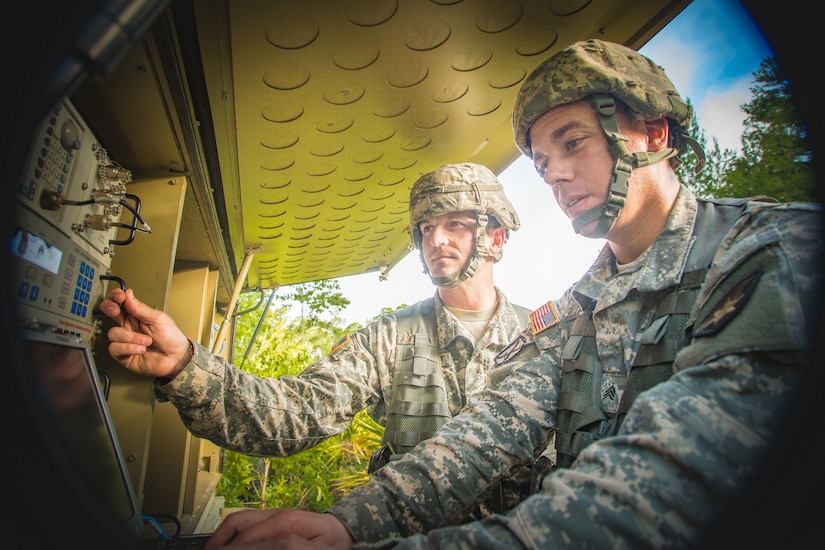
"That's when we can actually start to affect a fight," he said. "We want the warfighter to already have been using our Tranche 0 satellites in their exercises, so they're ready when [Tranche 1 satellites] come online in 2024."
Tournear said right now SDA is locked in on all the important details to get Tranche 0 satellites into the sky.
"SDA is not messing around," he said. "We have all of our contractors on contract for Tranche 0 on firm-fixed-price contracts to push forward to deliver. September 2022 is when we're going to be launching these capabilities. We delivered the first two satellites. We delivered them to the launch vehicle nine months after we received funds. We're all about speed."
New Jersey National Guardsman Staff Sgt. Ralph Bird competes in the stress shoot event during the Region 1 Best Warrior Competition at Joint Base McGuire-Dix-Lakehurst, N.J., May 5, 2021.
An airman participates in marksmanship training during an advanced designated marksman course in Florence, Ariz., April 16, 2021.
The Thunderbirds, the Air Force's flight demonstration squadron, stand in formation before performing during the Sound of Speed Air Show in St. Joseph, Mo., May 2, 2021.
Marines extinguish a vehicle fire during a controlled burn training event at Cold Bay Airport, Alaska, May 5, 2021, as part of Northern Edge, an exercise that prepares joint forces to respond to crises in the Indo-Pacific region.
May 7, 2021 , DOD News
More than half of active-duty service members and about 44% of reserve service members are married. Together, that's nearly a million military spouses who stay behind during deployments and temporary duty assignments to maintain the homestead and care for about 1.6 million children, sometimes while also working their own job.

Military Spouse Appreciation Day is observed each year on the Friday before Mother's Day and recognizes the contributions to the nation's defense by the spouses of military service members — spouses who struggle every day to keep families together and safe while their service member is away.
"Military spouses may not always wear a uniform, but they serve and sacrifice alongside their service members and keep our military strong," President Joe Biden said in a White House proclamation released yesterday. "On Military Spouse Appreciation Day, we recognize and thank the military spouses who serve our nation and are critical to our national security."
During the COVID-19 pandemic, military spouses have worked harder to keep their families together. They've had to struggle with school shutdowns, limited child care options and, for some, a loss of income as well. In some cases, their spouses had to stay deployed longer due to COVID-19 restrictions.
"Still, military spouses have done what they do best: adapt, persevere and keep going," President Biden said.
Programs like First Lady Dr. Jill Biden's Joining Forces and the Defense Department's Military Spouse Employment Partnership are two efforts designed to help improve the ability of military spouses to keep families strong while their spouse defends the nation.
During a virtual event last month, Dr. Jill Biden told military spouses and stakeholders in the Joining Forces program that they are a critical part of what keeps the nation strong.

"You are the rudder that steers our military, and supporting your physical, social and emotional health is a national security imperative," Biden said.
Over the next few years, Joining Forces will focus on several key issues to help strengthen military families and reduce the burden on military spouses, she said:
May 7, 2021 | BY David Vergun , DOD News
The United States and its allies face an increasing set of threats from potential adversaries such as China, Russia and North Korea. U.S. Strategic Command's mission is to deter these threats through the deployment of a set of strategic capabilities, including nuclear armed submarines, bombers and intercontinental ballistic missiles.
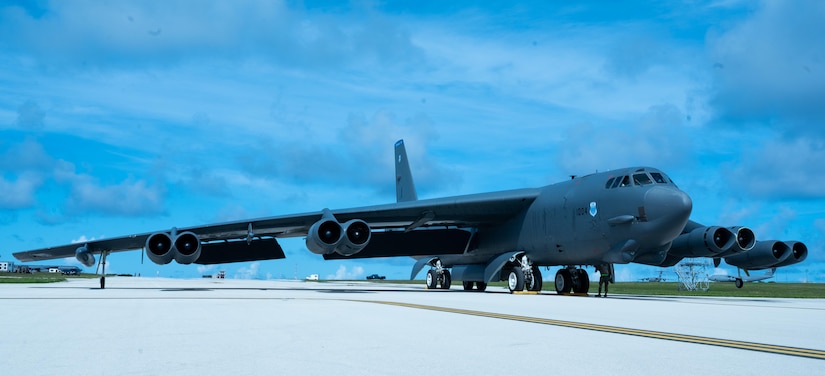
Navy Adm. Charles A. Richard, the commander of Stratcom, spoke virtually today about how his command is deterring these threats at the Brookings Institution.
"Strategic deterrence is the most important mission in the Department of Defense. It's our number one priority," he said.
Now for the first time in history, the U.S. faces two nuclear capable strategic peer competitors at the same time, he said.
Richard said he'd love to see a reduced role of nuclear weapons by the U.S., Russia and China and would like to extend them an olive branch.
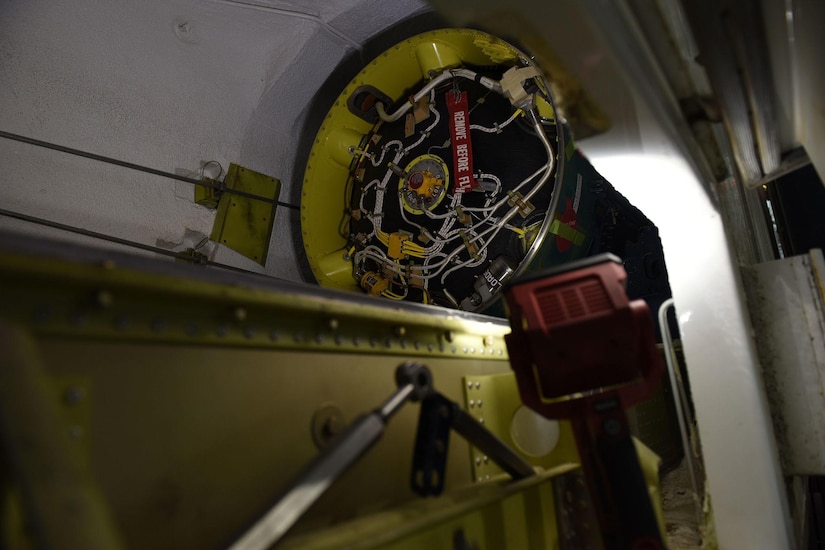
"I'd love for the day that I could report we don't need a U.S. Strategic Command," he said, because political agreements have been achieved with verification.
A good starting point on the path to reduction, he said, would be to have a conversation with Russia about its non-treaty accountable weapons. Conversations with China would be tremendously beneficial as well.
"One thing you can say about the U.S. and Russia — even all the way through the Cold War, as tense as that was at certain points — is that we talked all the way through and there was great value in that," he said, adding that having open communications can certainly bring the threat level down to everyone's mutual benefit.
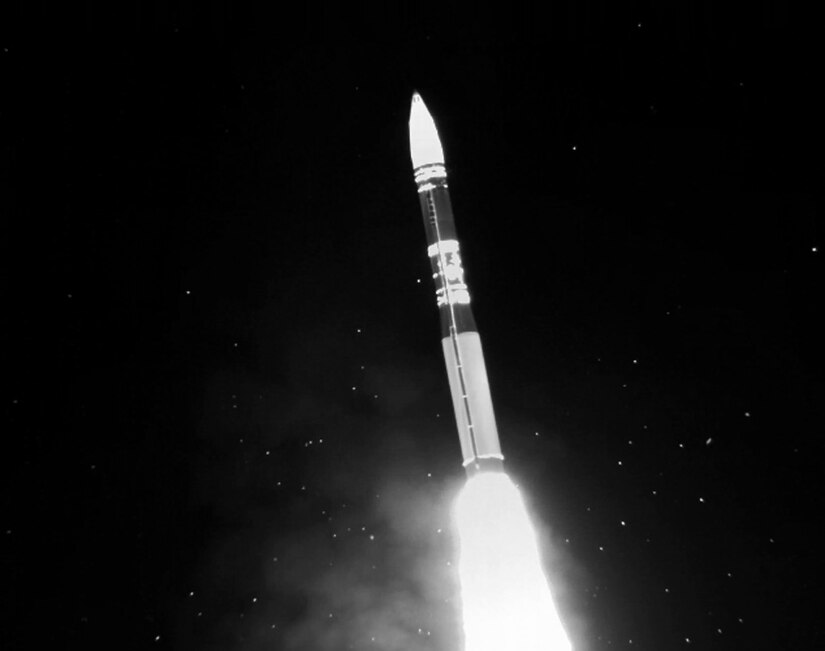
In the meantime, however, Stratcom works diligently to achieve a credible nuclear deterrent that is safe, secure and effective, he said, adding that nuclear deterrence is not just about protecting the U.S., it's also about protecting allies.
China, he said, is a growing threat. Their strategic and conventional forces are rapidly expanding in all domains.
Russia is undergoing a very extensive nuclear modernization program as well, he added.
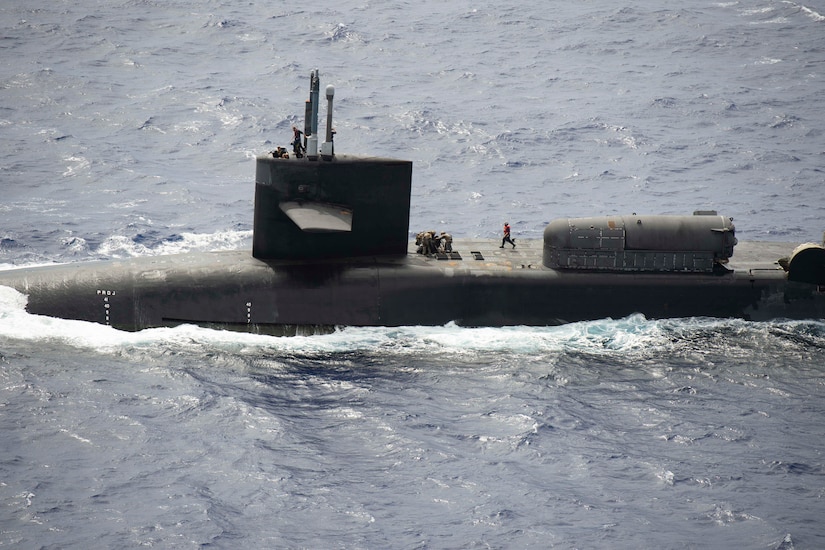
Because of these growing threats from China and Russia, modernizing America's own nuclear triad is of paramount importance, he said.
Richard also highlighted the importance he places on having a highly skilled and motivated workforce to operate and maintain the nuclear triad. These would include scientists, software developers, engineers and technologists.
Navy Seaman Ethan Sauer performs preflight ordnance checks on an F/A-18E Super Hornet during flight operations aboard the aircraft carrier USS Dwight D. Eisenhower in the Arabian Sea, May 4, 2021.
Marine Corps Cpl. Andrew Ritchie uses a weapon system during live-fire training at Camp Lejeune, N.C., May 6, 2021.
May 7, 2021
The Navy will commission its newest expeditionary mobile base, the future USS Miguel Keith (ESB 5), during a 10:00 a.m. PST ceremony Saturday, May 8, at Naval Air Station North Island, Coronado, Calif.
Due to public health and safety concerns related to the novel coronavirus (COVID-19) pandemic, the commissioning ceremony is private with a limited audience.
Adm. Craig Faller, commander, U.S. Southern Command, will deliver the commissioning ceremony’s principal remarks. Mrs. Eliadora Delores Keith, Lance Cpl. Miguel Keith’s mother, is the ship’s sponsor. The ceremony will be highlighted by a time-honored Navy tradition when Eliadora Keith gives the order to “man our ship and bring her to life!”
Capt. Troy A. Fendrick, a native of Tempe, Arizona, is the ship’s commanding officer and leads a crew of roughly 100 military officers and crew, alongside 44 Military Sealift Civil Service Mariners. The ship is 785 feet in length, has a beam of 164 feet, and a navigational draft of approximately 39 feet.
The ship, named in honor of Marine Corps Vietnam veteran and Medal of Honor recipient Lance Cpl. Miguel Keith, was built in San Diego by General Dynamics NASSCO and was delivered to the Navy on Nov. 15, 2019.
USS Miguel Keith is the third Expeditionary Sea Base (ESB). ESB was previously known as Afloat Forward Staging Base. These vessels are highly flexible platforms that provide logistics movement from sea to shore supporting a broad range of military operations. The ESB is designed around four core capabilities: aviation facilities, berthing, equipment staging area, and command and control.
USS Miguel Keith will be part of the Forward Deployed Naval Force operating from Saipan.
The event will be livestreamed for the general public and media to view. Livestream transmission will begin at 9:50 a.m. PST at: https://allhands.navy.mil/Live-Stream for those unable to attend.
For more news from Naval Surface Forces, visit DVIDS - Commander, Naval Surface Force, U.S. Pacific Fleet, and Commander, Naval Surface Force, U.S. Pacific Fleet.
Army Pfc. Anthony Granados administers a COVID-19 vaccine at the Community Vaccination Center at the Colorado State Fairgrounds in Pueblo, May 6, 2021.
Marines watch an R80D SkyRaider drone land at Fort Bragg, N.C., April 20, 2021, Rolling Thunder 21.2, a live-fire artillery exercise to increase the 2nd Marine Division’s combat readiness against a peer competitor.
Navy Lt. Cmdr. Michelle Lane draws the COVID-19 vaccine into a syringe aboard the USS Theodore Roosevelt in the Pacific Ocean, April 30, 2021.
Airmen load cargo onto an Air Force C-17 Globemaster III during Rainier War at Travis Air Force Base, Calif., April 30, 2021. The two-week exercise is designed to train aircrews to rapidly deploy personnel and equipment into a contested environment.